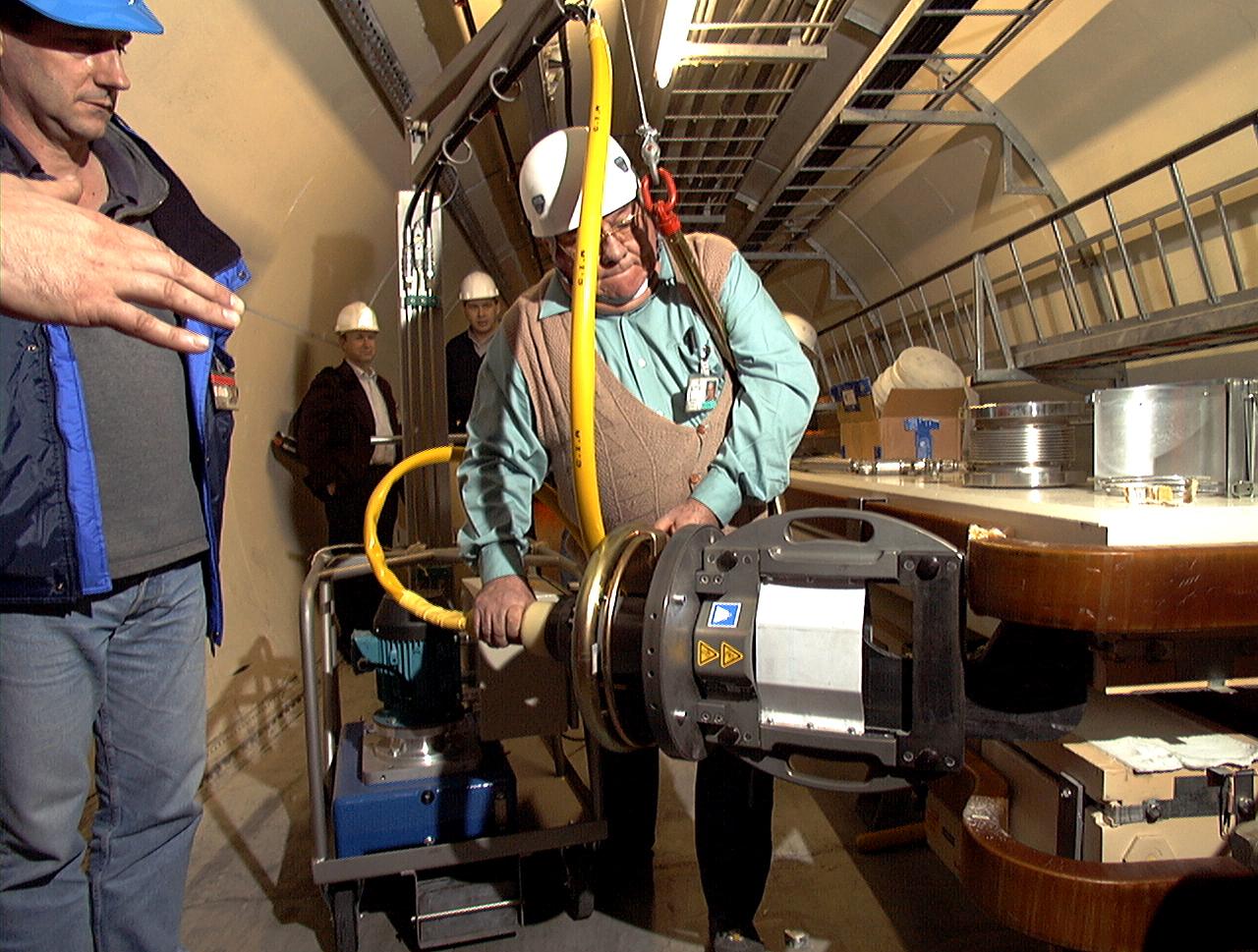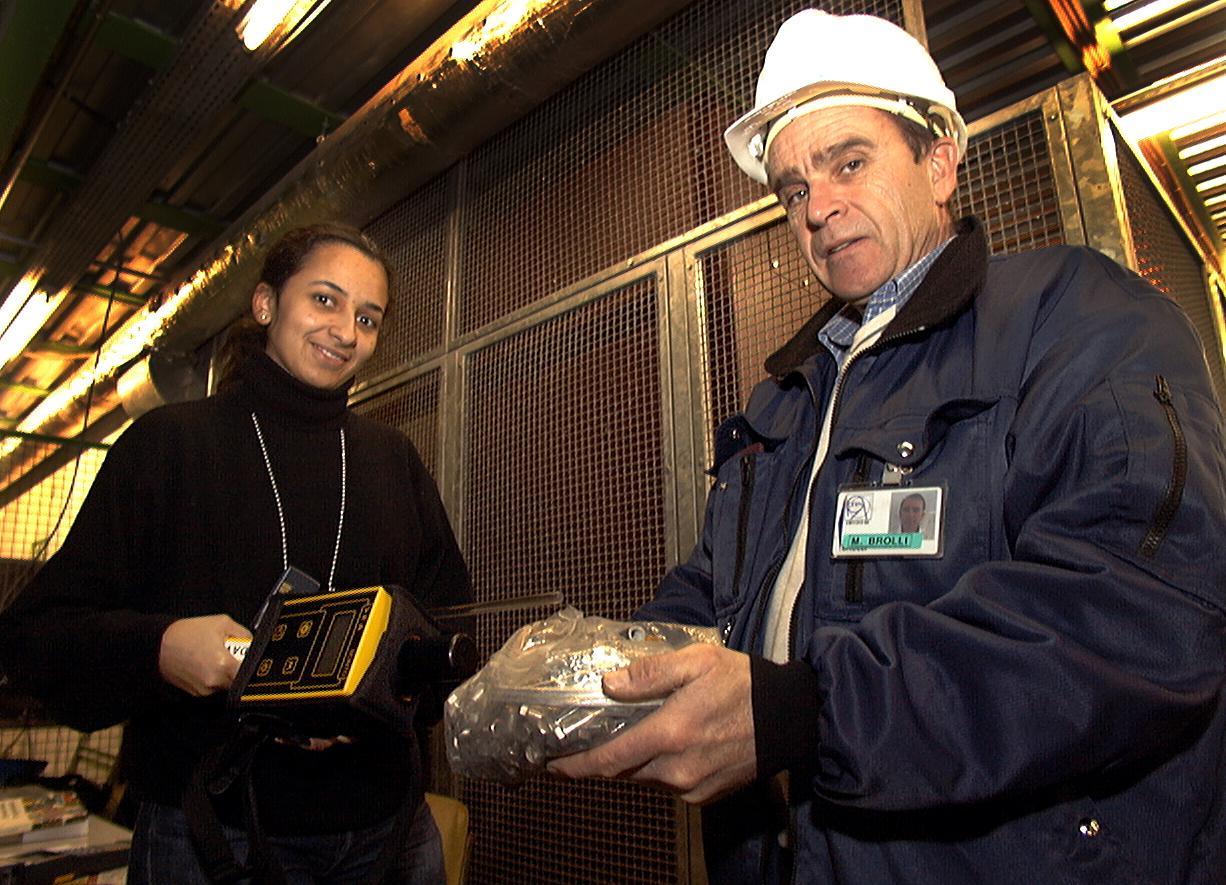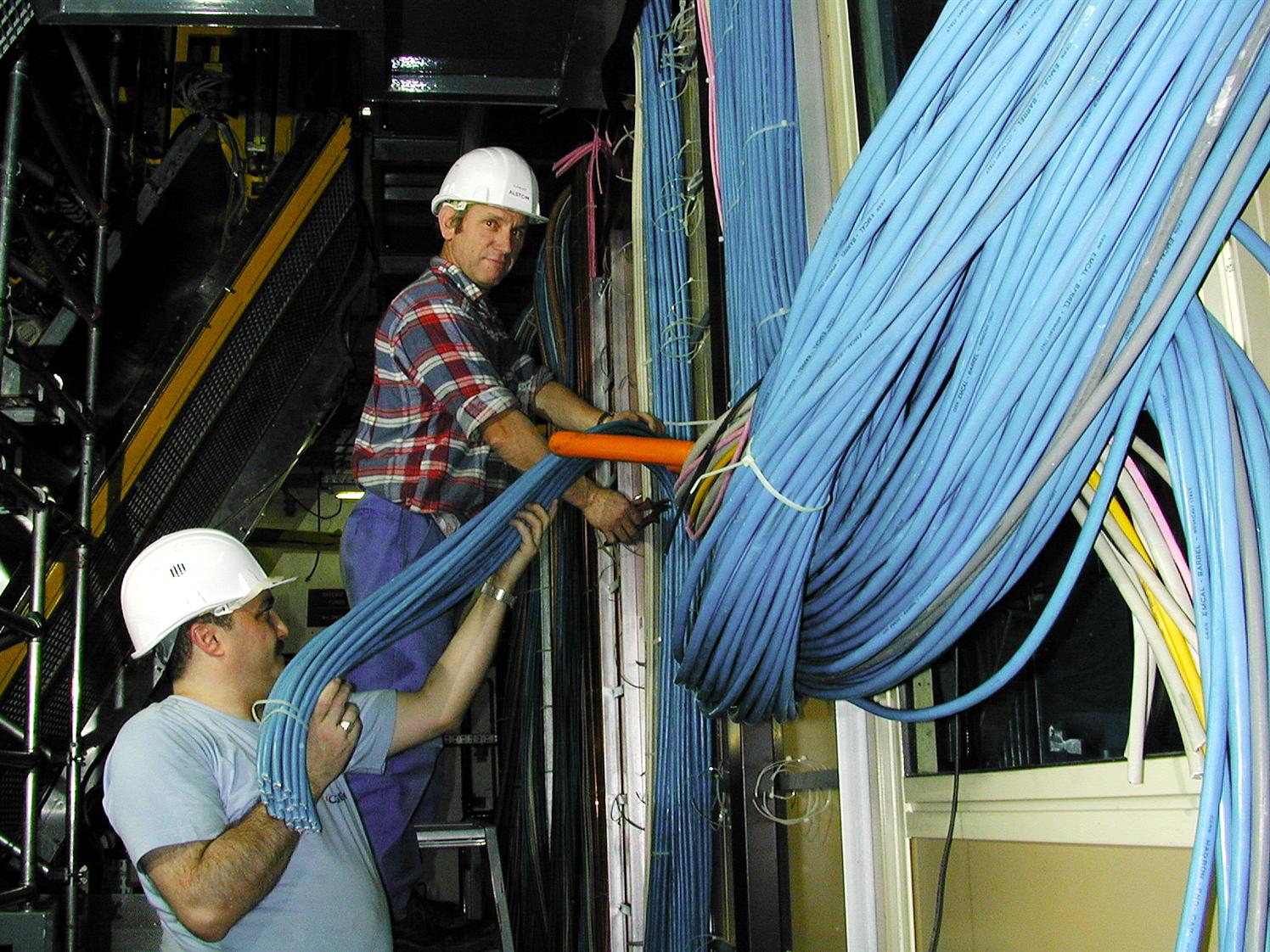LEP dismantling starts
Since the end of November, various teams have been getting stuck into dismantling the LEP accelerator and its four experiments. After making the installations safe, the dismantling and removal of 40,000 tonnes of equipment is underway.Down in the tunnel, it is a solemn moment. It is 10 o'clock on 13 December and Daniel Regin, one of those heading the dismantling work, moves in on a magnet, armed with a hydraulic machine. Surrounded by teams gathered there for a course in dismantling, he makes the first cut into LEP. The great deconstruction has begun. In little over than a year, the accelerator will have been cleared away to make room for its successor, the LHC.
The start of the operation goes back to 27 November. Because before setting about the machine with hydraulic shears and monkey wrenches, LEP had first to be made safe - it was important to make sure the machine could be taken apart without risk. All the SPS beam injection systems to LEP were cut off. The fluids used for cooling the magnets and superconducting cavities were bled. The vacuum chamber was brought back to atmospheric pressure. Finally, the power supplies were disconnected - apart from those supplying equipment needed for dismantling purposes, such as the monorail and lighting system.
These first three weeks have also been put to good use by conducting a radiological examination of the accelerator. Since being built, LEP has in been classified under French law as a basic nuclear installation, an installation nucléaire de base (INB). It is therefore being dismantled under strict supervision. LEP's radioactivity is, however, extremely limited and restricted to just a few components. After 11 years of operation '98% of the 40000 tonnes making it up are absolutely free of radio-activity', stresses John Poole, who is in charge of the dismantling operation. The remainder is classified as 'very slightly radioactive', at levels just above the natural background radiation in the granite of the Alps. These components are metal parts that were in contact with the beams. A zoning system has been put in place to separate off the few areas containing active materials. The zoning has since been checked and confirmed by radioactivity measurements taken all around the 27 kilometres of the machine.

On 13 December, Daniel Regin, one of those heading the dismantling work, made the first cut in to LEP with a hydraulic nibbling machine. Members of teams gathered for a lesson in dismantling look on.
The INB classification requires strict adherence to the regulations, in particular 100% traceability of all equipment and material leaving LEP. The smallest box of nuts and bolts must be labelled and a trace kept on it right up to the moment it is destroyed. Nothing can leave the LEP tunnel unless it has undergone one radioactivity check underground and a second at the top of the shaft. Then a third measurement is made when the material leaves CERN. All this means that radio safety technicians are permanently present at all the LEP sites.
Another consequence is that LEP is off limits to all visitors. All access authorizations issued up to now are no longer valid. Special training must be followed to obtain a new access card for the experiments or the tunnel, and the access system has been replaced. All access gates are now linked to a central data base to facilitate access control.

Everything removed from the tunnel undergoes three radiation checks: a first in the tunnel, a second (shown here) on the surface, and a third before leaving CERN.
But the most visible consequence of the dismantling job will be the enormous amount of equipment to be removed. 30 000 tonnes are to be brought out from underground. A special 4800 square metre area has been specially prepared on the Prévessin site of CERN to stock the conventional equipment in transit. The prize for the largest tonnage goes to the magnets, weighing 18 000 tonnes in all! The vast majority of the magnets are dipoles measuring 12 metres in length that must be cut in two before being extracted. But the tunnel houses a host of other things: 1000 tonnes of vacuum systems, 2000 electrical junction boxes and several hundred kilometres of cable that will need to be cut out, to name but a few.
At the peak of the operation, there will be 250 people working on the job of dismantling and removing parts of the accelerator. The bulk of the work will start in early January and it will take 16 months to remove the entire machine.
For more information on the dismantling operation, training courses and rules of access, a special web site has been set up:
| Of the 30 000 tonnes that make up LEP, 15 000 tonnes will be recycled by CERN. For example the dipole magnet yokes will be pressed into service as building materials for strengthening structures. 400 tonnes of material, such as the superconducting accelerator cavities, will be put aside for possible use in future CERN experiments. Most of the rest will be sold to qualified firms who are to deal with the recycling work. Finally, the small tonnage of very weakly radioactive material, will be stored in a dedicated and protected zone pending final elimination through authorized channels. |
The four LEP experiments are also being dismantled
While the great clear-out starts in the tunnel, work on the underground experimental halls is also in full swing, since it is also dismantling time at ALEPH, DELPHI, L3 and OPAL. where some 10 000 tonnes of equipment has to be removed. Depending on the experiment, this task will take six to nine months to complete.
As with LEP, the first task was to make safe the different installations involved in the experiments. Gases and fluids were drained and power supplies cut off. But before that could happen, DELPHI, ALEPH and OPAL had to carry out the task of demagnetizing their magnets. After eleven years of operations, these powerful magnets had magnetized certain parts of the detectors, making them adhere tightly to one another. To make the job of dismantling easier, these parts had to be 'unstuck': so the teams powered up the magnets to generate a cycle of magnetic fields with opposing polarities and decreasing intensities. 'That way we were able to reduce the remaining fields a hundred-fold', explains Christian Joram, technical coordinator at DELPHI. The superconducting magnets at DELPHI and ALEPH (where operating temperatures are close to -270oC) were then warmed up to ambient temperature.
At DELPHI, dismantling workers cut the first cables of the detector.
The DELPHI teams have already started work on removing the outer ring of the detector, taking out the muon chambers that make it up. But the detector will be partly saved. 'We are going to remove only 1200 tonnes of its total of 3000 tonnes', says Joram. It is planned to retain the barrel as a museum piece. It will be slid down to one end of the cavern and separated by a thick wall from the LHCb detector, which will be built on the other side. Lack of space means that the two end caps will have to be dismantled. Items of interest from the other three detectors will also be kept for exhibition purposes. And the huge L3 magnet will remain in place to be used by the future ALICE detector.

Dismantling gets underway at ALEPH. Hundreds of kilometres of cable have to be raised to the surface.
To take charge of the dismantling work, DELPHI, L3 and OPAL called in the participating institutes of their collaborations, the same ones that assembled the various sub-detectors more than 11 years ago. 'They are the best placed to take down what they put up', considers Joram, 'some 15 groups will be doing the dismantling work at DELPHI.' A small 10-man permanent team of CERN staff is coordinating the work. Meanwhile, at ALEPH a special common fund has been set up to finance dismantling, with contributions from all the institutes in the collaboration. This is being used to pay for a single team which is in charge of breaking up the entire detector. 'Where they need to, the groups in the collaboration will recover their equipment once it reaches the surface', explains Jean-Paul Fabre, technical coordinator of ALEPH.
And on the surface, the four collaborations have combined their transport and logistics operations. Thus, a single Swiss firm has been entrusted with purchasing and recycling equipment that will not be re-used by CERN or the institutes. 'This firm has set up a common storage site at Peney, in the Canton of Geneva', says Joram, who has overall responsibility for coordinating the dismantling of the experiments.
The 10 000 tonnes of equipment will not be systematically labelled or kept track of by constant monitoring as is the case with the accelerator. This is because calculations and measurements have shown that the detectors are not radioactive and are therefore conventional zones. On the other hand they do house numerous radioactive sources used for calibration purposes. Those in charge of dismantling have therefore decided to take every precaution. All the equipment will undergo radiation testing before being brought out from underground. And as the halls are now work sites with all the risks that this implies, they will henceforth only be accessible to individuals working on the dismantling. The old access cards have in any case been cancelled. And everyone working on the detectors has had to take special safety courses.
More information on dismantling the experiments, you may consult the following site:

